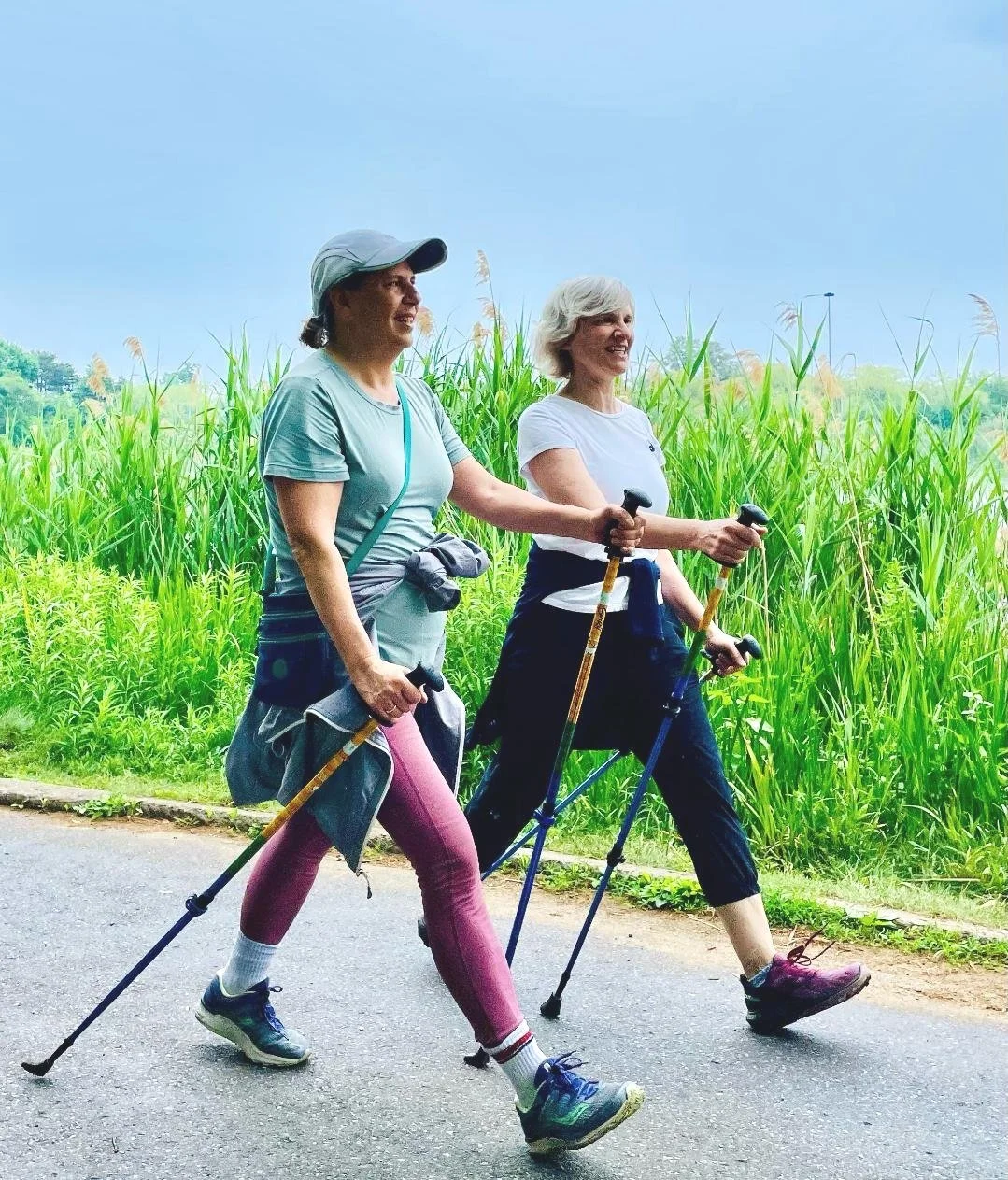Nordic walking is a fantastic outdoor activity that combines elements of hiking and regular walking with the use of specially-designed poles.
Definition:
Nordic walking involves walking with poles that resemble ski poles and hiking poles but are specifically designed for Nordic walking. It originated in Finland as a way for cross-country skiers to stay fit during the off-season.
Technique:
With each stride, you swing a long straight arm forward, plant your pole on an angle behind you, and push down and back on the ledge or strap of the handle propelling yourself forward. This continuous plant-push-propel action engages your core, arms, and shoulders, providing a full-body workout.
Benefits:
Nordic walking offers a wide range of health benefits, including:
improved cardiovascular fitness,
increased calorie burn compared to regular walking
enhanced upper body strength
better posture
reduced stress on hips, knees and back
Versatility:
Nordic walking is incredibly versatility. You can do it almost anywhere – from city parks to hiking trails to urban streets. Plus, it's suitable for people of almost all ages and fitness levels.
Differences from Hiking (also known as trekking and tramping):
Hiking typically involves walking in natural environments like forests or mountains; Nordic walking can be done on a greater variety of surfaces, including pavement, sidewalks and dirt trails.
Hikers with poles typically keep their elbows bent and use their poles in any fashion that helps them to maintain stability and balance. Nordic walkers, walk with long straight arms, swinging up to a handshake position and returning the thumbs low to the sides of the thighs.
Differences from Regular Walking:
Regular walking primarily engages the lower body muscles while the upper body remains relatively relaxed. Nordic walking engages both the upper and lower body, resulting in a more intense workout.
Getting Started:
To get moving you just need a pair of Nordic walking poles and comfortable walking shoes.
Many parks and recreation centres and independent certified instructors offer Nordic walking classes. At a class or series of classes you’ll learn how to adjust your poles for your height, proper Nordic walking technique, and how to get the most from your workout.
Without at least one lesson, the average person defaults to a hiking technique, which offers just assistance with balance and none of the additional benefits of Nordic walking.





